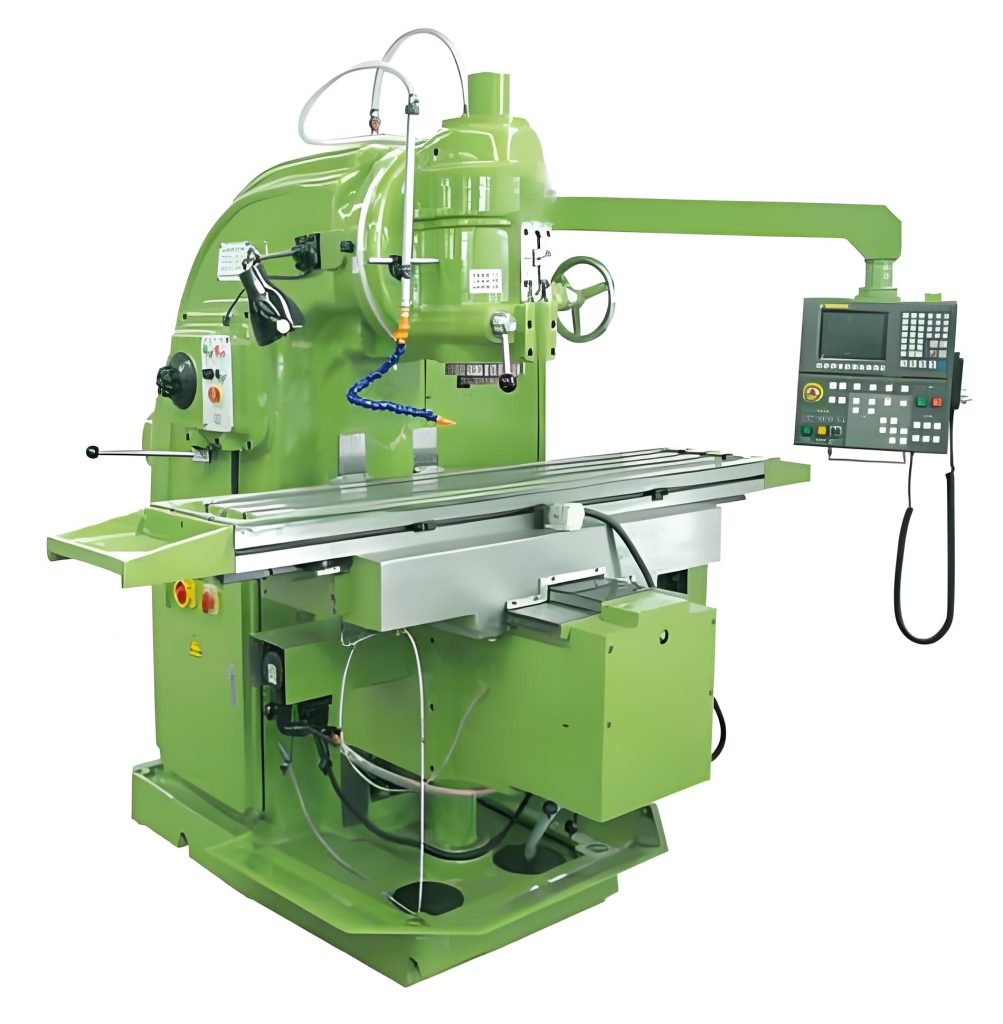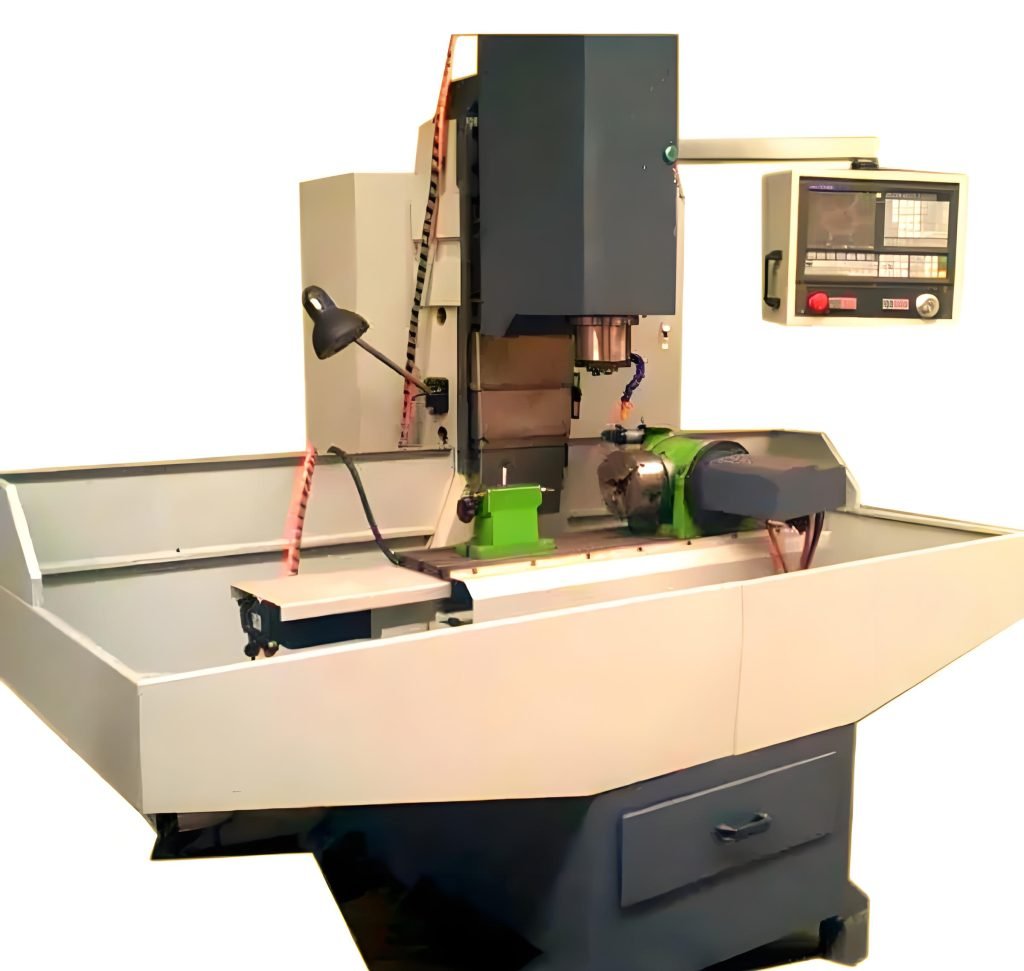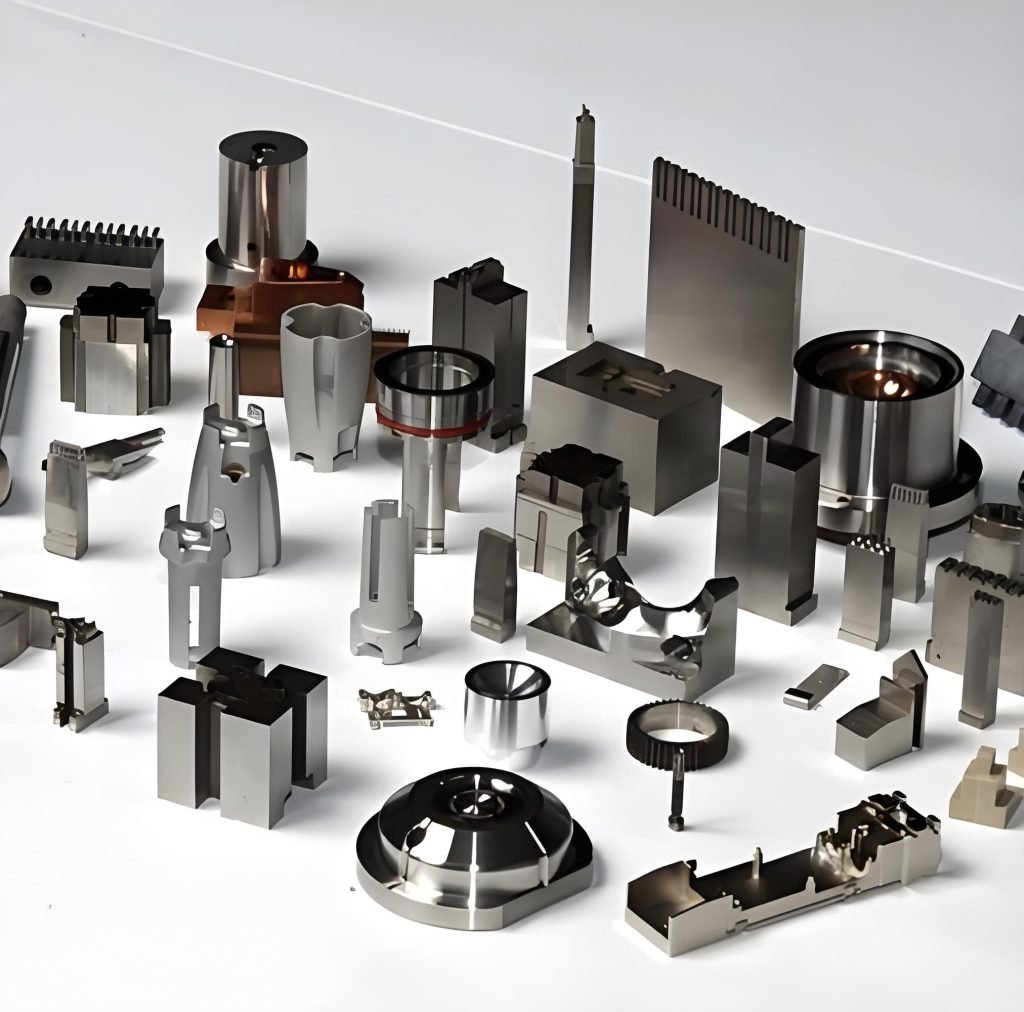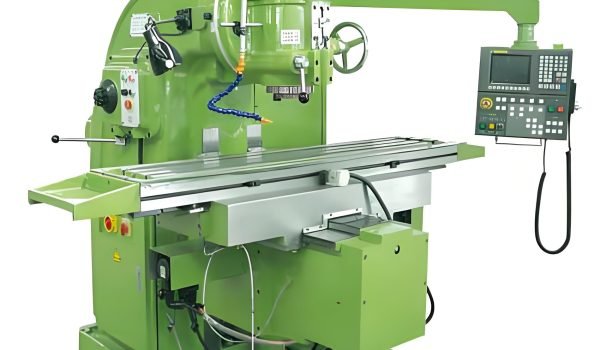Milling machines are essential elements of manufacturing. These machines can be evaluated as super-powered sculptors for metal and other materials. They use rotating cutters to machine things like small, delicate components or large, heavy machined parts. Milling machines are one of the most important manufacturing tools, and modern manufacturing would be a whole different world without them.
You’ll typically see two kinds of milling machines – vertical vs horizontal milling machine. It is important to know the differences between them, because which one is best is very project-dependent. So let’s take a look at each of them and see what they have in common and what their differences are, to help you in your specific mill selection.
What Is a Vertical Milling Machine?

Definition
Vertical milling machines are CNC machines that use an upright spindle, where the cutting tool points down and cuts from the top down. The simplicity of the vertical milling machine lends to its frequent presence in job shops and prototyping laboratories. They are very flexible, general-purpose machines, and when precision and visibility are critical, they provide operators with an excellent cutting process and ways to ensure accuracy.
How It Works
You clamp your workpiece on the table of the machine. The spindle that holds the cutting tool moves up and down (Z-axis), while the table moves left to right (X-axis) and front to back (Y-axis). The combination of movements allows the tool to remove material in a very precise manner to shape your part into what you want.
You will find models that range from simple 3-axis machines to advanced 4- and 5-axis machines. The additional axes provide you with significantly more flexibility to machine complex shapes, while giving you access to multiple sides of a part without needing to go through the lengthy process of re-clamping a part.
Advantages
Vertical milling machines are generally less expensive, so they are an excellent choice for smaller budgets and new businesses just getting started in CNC machining. The cost benefits are critical to many shops.
They are also generally easier to program and operate. This can greatly shorten your learning curve. One advantage is the phenomenal visibility of the cut area. You can see and clearly identify your work, especially nice for small parts, shallow parts, drilling, engraving, low volume runs, and rapid prototyping.
Disadvantages
One disadvantage of vertical milling machines is limited depth capability. Long and thin tools (for extreme depth slots) can cause excessive vibrations and contribute to inaccurate cuts and poor surface finish. This poses a challenge for parts requiring very deep features.
Also, vertical milling machines have a lower material-removal rate than horizontal mills, meaning longer cycle times for larger jobs. It’s more complex to machine multiple sides of a part in one setup, and it will usually result in a required repositioning of the workpiece, which leads to longer production times overall.
What Is a Horizontal Milling Machine?

Definition
A horizontal milling machine has a spindle that is flat; therefore, the cutting tool points horizontally and cuts in a horizontal plane. This design gives it greater power and efficiency for certain tasks. Often built as full machining centers, they include pallet changers and a tombstone fixtures, ideal for high-volume production, machining multiple parts or faces in one continuous operation.
How It Works
The workpiece is commonly mounted on a vertical fixture, or tombstone fixture in horizontal milling. You can attach several parts at once and machine them all simultaneously. The horizontal milling machine will use short, thick cutters that cut into the material from the sides. This side-on approach is one of its key features.
When the portion of the part being cut is removed, the chips, or waste material, will naturally fall due to gravity, providing better clearance in the cutting area. This leads to a better surface finish and longer tool life. The use of coolant will further provide chip flushing, leading to even more in-process cleaning, with greater efficiencies in machining.
Advantages
Horizontal milling machines have a high material removal rate. They take a deep, wide cut all in one pass, so production is faster, especially with large components that require material to be removed. They are extremely effective when doing heavy-duty work, and are very popular for demanding jobs.
The chips fall away easily, ensuring excellent chip evacuation and cleaner finishes, and longer tool life. Horizontal milling machines have more stability during heavy cuts, resulting in less vibration and leading to higher precision. You can also add a 4-axis rotary, which will enhance productivity and allow for multi-sided machining setups, which most shops like.
Disadvantages
The downside of horizontal milling machines is the higher purchase price. The cost of horizontal mills is about two to three times higher than vertical mills. It is a significant expense that may not work if you are on a limited budget or if you are a new company. You must consider this substantial upfront cost carefully.
They also demand more floor space and access, due to their larger footprint. Finding skilled operators for these complex machines can be challenging. Furthermore, they are often overkill for tiny or simple parts, as their power and capacity would be underutilized, making a vertical mill a more cost-effective option.
Horizontal vs Vertical Milling Machines: The Main Differences
The horizontal milling machine vs vertical milling machine discussion always seems to come down to these fundamentals.
Spindle Orientation
The most fundamental difference between these two machines lies in how their cutting tool is oriented. The spindle of a vertical milling machine points straight down, causing the tooling to cut down from above. You can think of it as a very precise drill press that can move in multiple directions.
However, a horizontal milling machine has the spindle placed sideways. This means the cutting tool attacks your workpiece from the side. This different orientation allows for unique cutting strategies and helps chips clear away more easily. This is a key differentiator in the vertical vs horizontal mill discussion.
Tool Geometry
When it comes to the tools they use, horizontal mill vs vertical mill designs are used for different types. Vertical mills typically use long, slender end mills. These are excellent for detailed work, creating pockets, or precise engraving, and you get a clear view of the cutting action.
In contrast, horizontal mills often use short, thick cutters mounted on an arbor. These machines are tough and designed to make heavy, wide cuts. A horizontal mill is very efficient at removing a lot of material from a part very fast, and is ideally suited for roughing or deep slots.
Cutting Depth & Power
Horizontal mills generally have a clear advantage when you need deep cuts and significant power. They can remove a massive amount of material in a single pass due to their strong setup and rigid design. If the large part that you are producing needs a lot of material removed quickly, the horizontal mill is usually going to be the fastest.
What vertical mills excel at is precision for fine, shallow features and complex detail. They don’t remove material as fast as horizontal mills, but they are more accurate during finishing operations, small pockets or delicate engraving. If you want high precision on small features, pick a vertical mill.
Cost Comparison
Let’s talk about the cost of these machines. If you’re looking at the initial purchase, vertical mills are typically 30–50% less expensive than horizontal mills. This makes them a more accessible option if you have a smaller budget or are just beginning with CNC machining.
However, consider the long-term cost. While the hourly rate for a horizontal mill might be higher due to its complexity, its superior throughput on large production runs can actually lead to a lower cost per part. For big orders, the efficiency of a horizontal mill often saves money over time.
Accuracy vs Speed
In terms of accuracy and speed, this is where each machine really differs. Vertical mills yield tighter tolerances on smaller parts. Having precise control is very important for intricate designs and high-precision pieces. If your project calls for extremely fine details with exact dimensions on smaller items, then a vertical mill will be what you need.
On the other hand, horizontal mills typically have much faster cycle times, especially for larger parts or in high production quantities. While for a single cut, a horizontal mill might not be as precise, it can remove material very rapidly, meaning that the overall production speed is much faster. For a big part where throughput is more important than precision, a horizontal mill will get the job done quicker.
Quick Comparison: Horizontal vs Vertical Mill
| Feature | Vertical Milling Machine | Horizontal Milling Machine |
| Spindle Orientation | Vertical (cuts from above) | Horizontal (cuts from the side) |
| Tool Geometry | Long, slender end mills (precision work) | Short, thick arbor-mounted cutters (heavy cuts) |
| Cutting Depth & Power | Shallow, precise cuts | Deep, powerful material removal |
| Cost | 30–50% cheaper upfront | Higher initial cost, but lower cost per part in bulk |
| Accuracy vs Speed | High accuracy for small, intricate parts | Faster cycle times for large/high-volume jobs |
Considerations for Choosing Between Vertical and Horizontal Machines
When deciding between a vertical milling machine vs horizontal milling machine, there is some general guidance to follow.
Part Size and Precision Needs

When you have to make a decision, first think about the size of your parts and their tolerances. If you are making small, intricate parts, a vertical milling machine tends to be the best option because it has all the flexibility in control and great visibility to do detailed work.
However, if you need to make larger parts where you will be removing a lot of material quickly, a horizontal milling machine would be a more efficient option. If your parts need to be extremely precise, like ±0.001″ or even tighter tolerancess, you would lean toward a vertical mill.
Production Volume and Budget
The other very important variables to consider are production volume and budget. For small runs of around 1 to 100 parts, a vertical mill is generally reasonable and more cost-effective. But if your parts are over 100 identical parts, the time and money you would realize benefits from a horizontal milling machine would be significant.
From a financing aspect, if your machine budget is less than $100,000, it is typically easier to finance and purchase a vertical mill. In many instances, the specialized work of horizontal machining is more economical – it would be better to outsource an experienced provider to do the necessary horizontal machining work instead of making a large investment.
Lead Time and Part Complexity
Think about what your lead time is and the complexity of the geometry of your part. If you need parts quickly, let’s say, in 48 hours, a vertical mill usually will be quicker to set up for a quick turnaround, and help you get faster with a product to meet your tight deadlines.
Finally, assess how complex your part is. If it has multiple faces that need machining or requires very deep pockets, a horizontal mill will typically perform much better and more efficiently. Its design excels at tackling intricate, multi-sided components with ease.
Fecision – the Best CNC Machining Services for Both Worlds
When choosing between a horizontal vs vertical milling machine, you need a partner who masters both technologies. Fecision delivers exactly that – precision CNC milling solutions tailored to your project requirements.
Our ISO-certified facility combines advanced 3-5 axis CNC machines with rigorous quality control. Whether you need the precision of vertical milling for complex geometries or the power of horizontal milling for heavy material removal, we’ve got you covered.
Key advantages of our milling services:
- Multi-axis capabilities for complex parts
- Strict quality standards with CMM inspection
- Material expertise across metals and plastics
- Fast turnaround with 24/7 production capacity
- No minimum order quantity for flexible production
We optimize every project, from prototype to full production runs for manufacturability and cost effectiveness. Our engineering team self-optimizes every project to ensure it can get the best results using either a horizontal milling vs vertical milling approach.
Need reliable CNC milling? Start your project today with Fecision – where precision meets performance.




